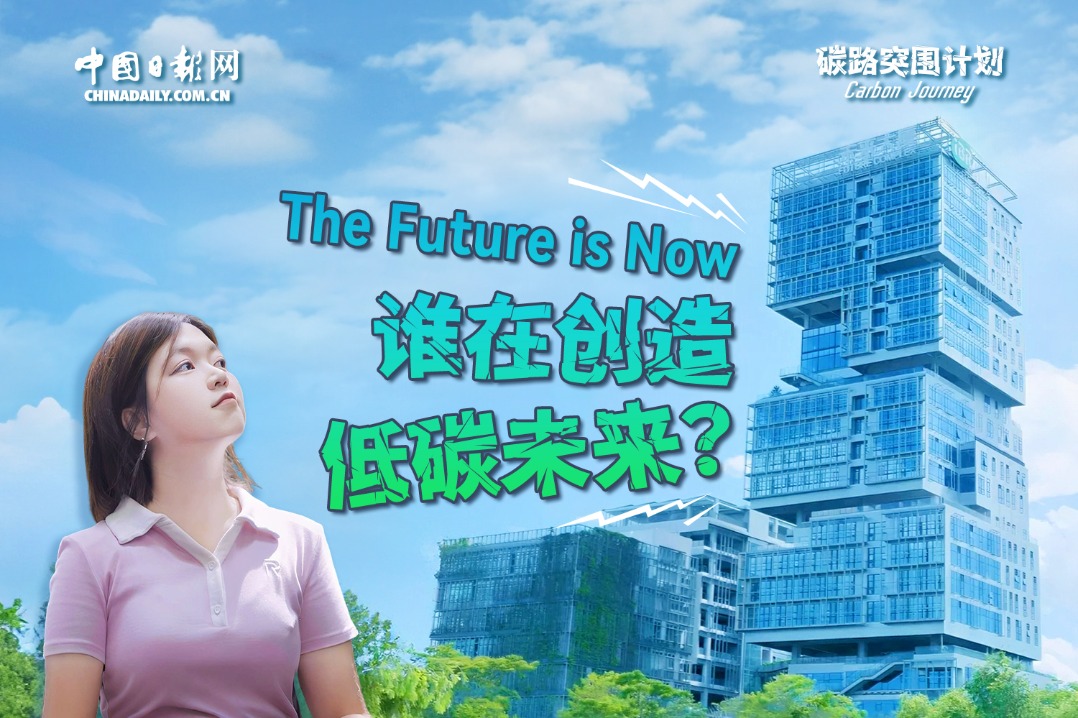Smart cities can better cool down
By Jiang Peng | Updated: 2023-07-14 14:18

The degree of urbanization worldwide reached 57 percent last year, indicating more people are living in cities and other urban settings than in rural areas. Cities are very important to human activity and economic development, but at the same time they are more vulnerable to heat waves, floods and other weather-related disasters.
Urbanization often results in intensified land surface warming in and around cities and towns. Combined with that, the urban heat island effect causes the mercury to rise higher in cities than in suburban and rural areas. And the fact that air conditioners in cities and towns continuously spew heat during the summer months exacerbates the urban heat island effect, which in turn makes cities hotter than rural areas.
Rising temperatures in urban areas around the world will worsen air and water pollution, harm human health, intensify electricity and energy shortage, and even spark fires, destabilizing urban systems and operations.
In order to keep cities relatively cool, the authorities need to implement long-term plans to improve their resilience to extreme heat events, strengthen monitoring, evaluation and early warning systems, and build climate-adaptive infrastructure. Also, cities should form expert teams to properly assess the changing situation and identify vulnerable zones and groups of people, so special measures can be taken for their protection.
Besides, urban planning should include provisions for reducing carbon emissions and urban heat island effect, and communities should be encouraged to prepare in advance to deal with heat waves and mitigate the effects of climate change.
While city planners should pay closer attention to conserving urban vegetation and plant more trees and plants, use lighter pigments in asphalt and apply white-color coatings to roads, building roofs and facades, so they reflect more sunlight and thus reduce the heat effect, urban officials need to assess the density of buildings and use open spaces to build more canopies or shaded areas on streets and pavements.
There is also a need to build more green, smart buildings that save energy and reduce emissions. And solar photovoltaic panels should be installed on the roofs of buildings to generate electricity and thus reduce the use of fossil fuel-powered electricity.
It is also important to adopt smart technologies to promote high-quality development in urban areas. First, digital technologies should be applied to advance warning systems for extreme weather events, especially heat waves, in order to improve data sharing among regions and cities.
Second, digital technologies can help the authorities formulate more detailed plans to improve their ability to respond to emergencies.
Third, since digital technologies can provide effective solutions to extreme weather-related emergencies, the urban emergency management system should cooperate with other departments such as transportation, medicine and electricity to transform the traditional models of disaster relief and optimize resource allocation. Digital technologies can, at a rapid pace, screen, analyze and process multisource information and unstructured data, and give feedback and thus help the authorities to take preemptive action.
Fourth, social media platforms should be used to integrate social resources, and build broad consensuses on and develop self-help and mutual assistance capabilities, while multimedia channels should be used to help establish a crisis response mechanism encompassing different groups, and increase the ability to deal with extreme weather events. The use of new social platforms will help people to report risks immediately, even in advance, allowing governments at different levels to timely respond to a crisis or a developing situation.
Fifth, the authorities could build a "digital twin city", a virtual replica of a real city, and use simulations to improve the city's efficiency in reducing emissions, and respond to weather-related emergencies. This exercise can also be used to develop a model for urban planning and construction, and promote sustainable development through the use of digital technologies and innovations, apart from helping build low-carbon cities, resilient cities and sponge cities.
The "city information modeling" takes data collected from a variety of sources and weaves them together to create a highly interactive 3D model of large-scale urban environments, helps cities monitor carbon emissions and formulate targeted emissions reduction policies. Resilient cities, as their name suggests, are more resilient to extreme weather events and other emergencies, including heat waves, power blackouts and disruptions in food supply. As for sponge cities, they are designed in way that rainwater is kept and absorbed where it falls through smart urban drainage systems, and in lakes and other water bodies. In other words, sponge cities are designed to reduce the damage from flooding.
And sixth, the analysis of user behavior data in a smart city can help families reduce their carbon footprint.
Cities can play an important role in promoting sustainable development and safeguard food security through urban industrialization of agriculture. And the integration of agriculture and industries using information and communication technology can improve resource allocation, reduce emissions, better protect the natural ecology, minimize the urban heat island effect, and make cities more resilient to climate change.
The author is a researcher at the China Center for Urban Development.
The views don't necessarily reflect those of China Daily.
The opinions expressed here are those of the writer and do not necessarily represent the views of China Daily and China Daily website.
If you have a specific expertise, or would like to share your thought about our stories, then send us your writings at opinion@chinadaily.com.cn, and comment@chinadaily.com.cn.
























